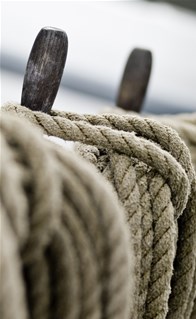|
The 173 member countries of the International Maritime Organization (IMO) have agreed that the total CO2 emissions of international shipping must be halved by 2050 compared to 2008. To achieve this goal, seagoing vessels must emit 40% less CO2 by 2030. With the ultimate goal to make the maritime sector climate neutral. The Energy Efficiency Existing Ship Index (EEXI), which is expected to take into force on the first of January 2023, is one of the agreed measures to achieve these objectives.
The EEXI will apply to almost all seagoing cargo and passenger ships above 400 GT and assesses the energy efficiency of the design and the equipment of the ship. The EEXI is equivalent to the Energy Efficiency Design Index (EEDI) for newbuilding vessels.
Energy Efficiency Existing Ship Index (EEXI) compliance services
The EEXI will require ship owners and shipping companies to show that their calculated attained EEXI value does not exceed the threshold value set for their ship type. Together with our partner VICUSdt we will be pleased to assist you with this. Our tailor made EEXI compliance services are turnkey and divided over three stages.
Stage 1: Basic EEXI calculation
In this phase, we will calculate your attained EEXI value. This is based on the calculation guideline of the EEDI for new-build ships from 2018, but with some adjustments for existing ships. The EEXI, which relates to the ship's design, describes the CO2 emissions per cargo ton and mile that are related to the installed power (main and auxiliary engines), the transport capacity and the speed of the ship.
Because the Energy Efficiency Existing Ship Index relates to several ship types, various adjustments have been made to the formula to enable a good comparison. Various correction factors have been defined to correct the installed power. Think of Ice-class ships.
Stage 2: Selection of technical measures
When we have finalized your EEXI calculation, we start with an operational profile analysis. Then we figure out the most frequent sailing conditions and most energy intensive sailing conditions for your ship. And we start collecting all the necessary technical data, such as engine data, sea trials and tank test. For selecting the right technical measures, a shaft power measurement and a main engine pressure analysis belong to this investigation too.
Computational Fluid Dynamics (CFD) software is used to map the hydrodynamic performance of your bow and stern. This approach can best be compared to towing tank tests in a large basin in which the ship model has to undergo the preset waves, but then digitally.
After completing our CFD-studies we come up with the technical challenges and limitations and present you a list of options. For example, a more efficient propeller and/or rudder design, Energy Saving Devices (ESDs) like a pre-swirl stator, propeller boss cap fins (PBCF), twisted rudder, rudder bulbs, a variable speed generator or a more efficient bulbous bow.
Stage 3: Development of selected solutions for implementation
This phase concerns the implementation of the chosen solutions. We can help you with this up to and including the installation and commissioning of the energy-saving measures. And that includes preparing the necessary EEXI technical file for your class society.
Service
Berger Maritiem has solid relations with expert partners to be able to provide you with a fast and professional service for your efficient propulsion components. With 24/7 technical support, we are here to help you wherever your vessel is at berth in Europe.
Get in touch with us
Do you have a question or do you want expert advice? Feel free to contact us or have a look to our page with business cases.
|
Energy Efficiency Existing Ship Index (EEXI) compliance services




